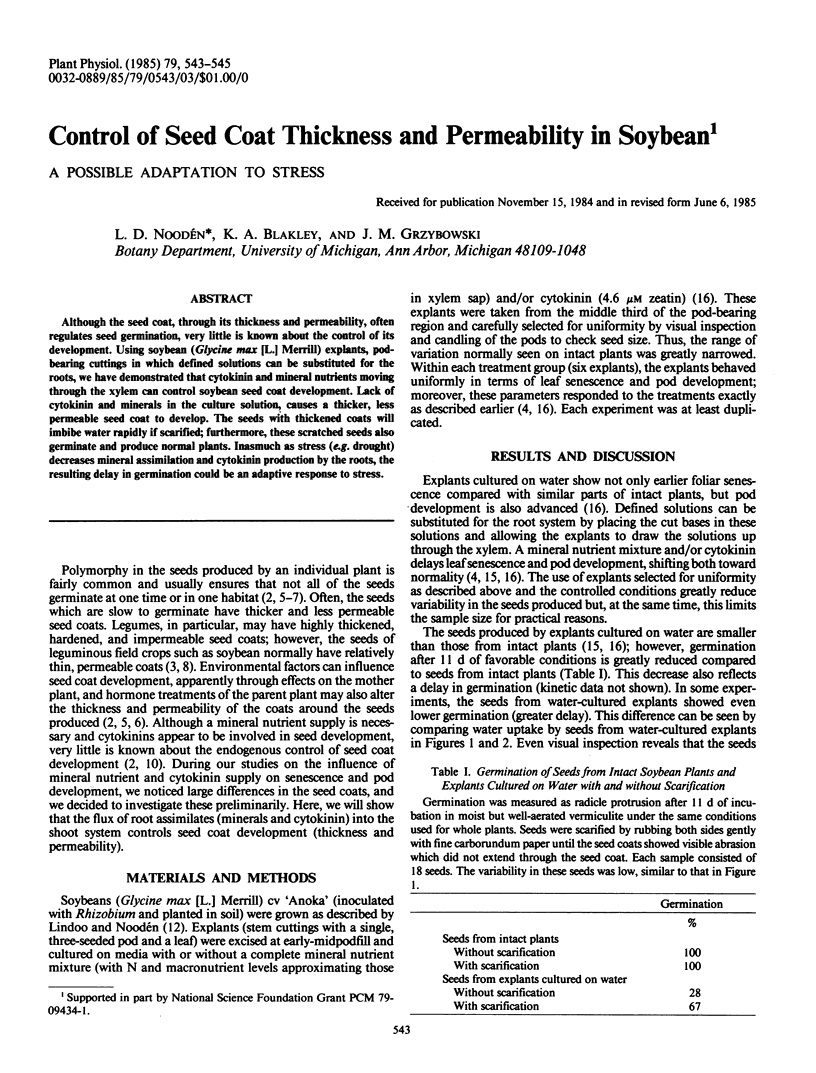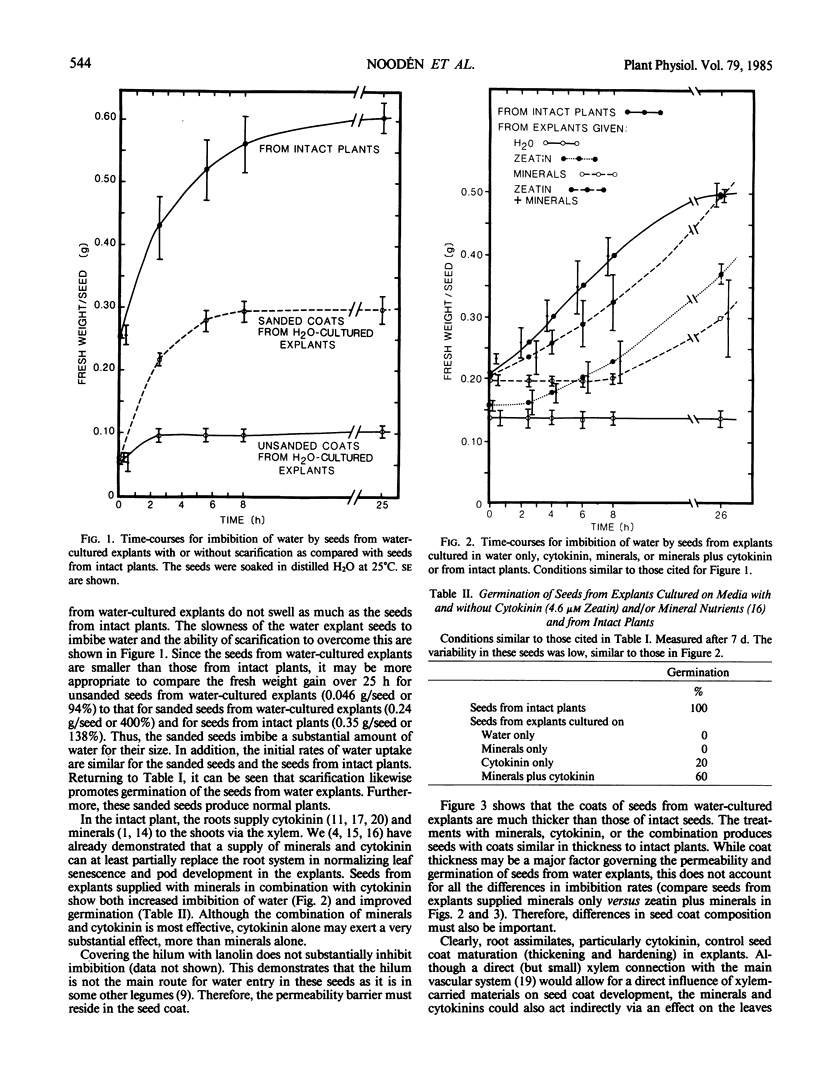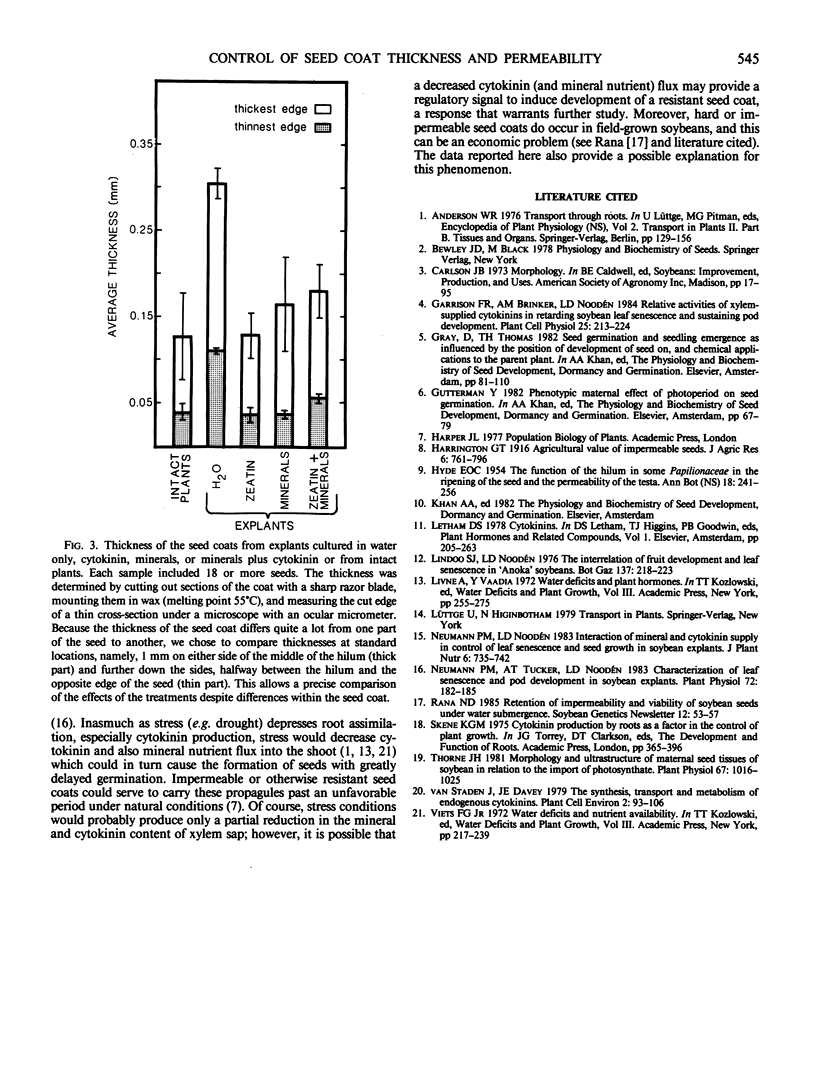Abstract
Although the seed coat, through its thickness and permeability, often regulates seed germination, very little is known about the control of its development. Using soybean (Glycine max [L.] Merrill) explants, podbearing cuttings in which defined solutions can be substituted for the roots, we have demonstrated that cytokinin and mineral nutrients moving through the xylem can control soybean seed coat development. Lack of cytokinin and minerals in the culture solution, causes a thicker, less permeable seed coat to develop. The seeds with thickened coats will imbibe water rapidly if scarified; furthermore, these scratched seeds also germinate and produce normal plants. Inasmuch as stress (e.g. drought) decreases mineral assimilation and cytokinin production by the roots, the resulting delay in germination could be an adaptive response to stress.
Full text
PDF


Selected References
These references are in PubMed. This may not be the complete list of references from this article.
- Neumann P. M., Tucker A. T., Noodén L. D. Characterization of leaf senescence and pod development in soybean explants. Plant Physiol. 1983 May;72(1):182–185. doi: 10.1104/pp.72.1.182. [DOI] [PMC free article] [PubMed] [Google Scholar]
- Thorne J. H. Morphology and ultrastructure of maternal seed tissues of soybean in relation to the import of photosynthate. Plant Physiol. 1981 May;67(5):1016–1025. doi: 10.1104/pp.67.5.1016. [DOI] [PMC free article] [PubMed] [Google Scholar]
- Tokarskaia Z. B., Okladnikova N. D., Surina A. G., Kozlova N. V. Kreatinkinaza syvorotki krovi pri zabolevaniiakh serdechno-sosudistoi sistemy. Kardiologiia. 1985 Aug;25(8):53–57. [PubMed] [Google Scholar]


